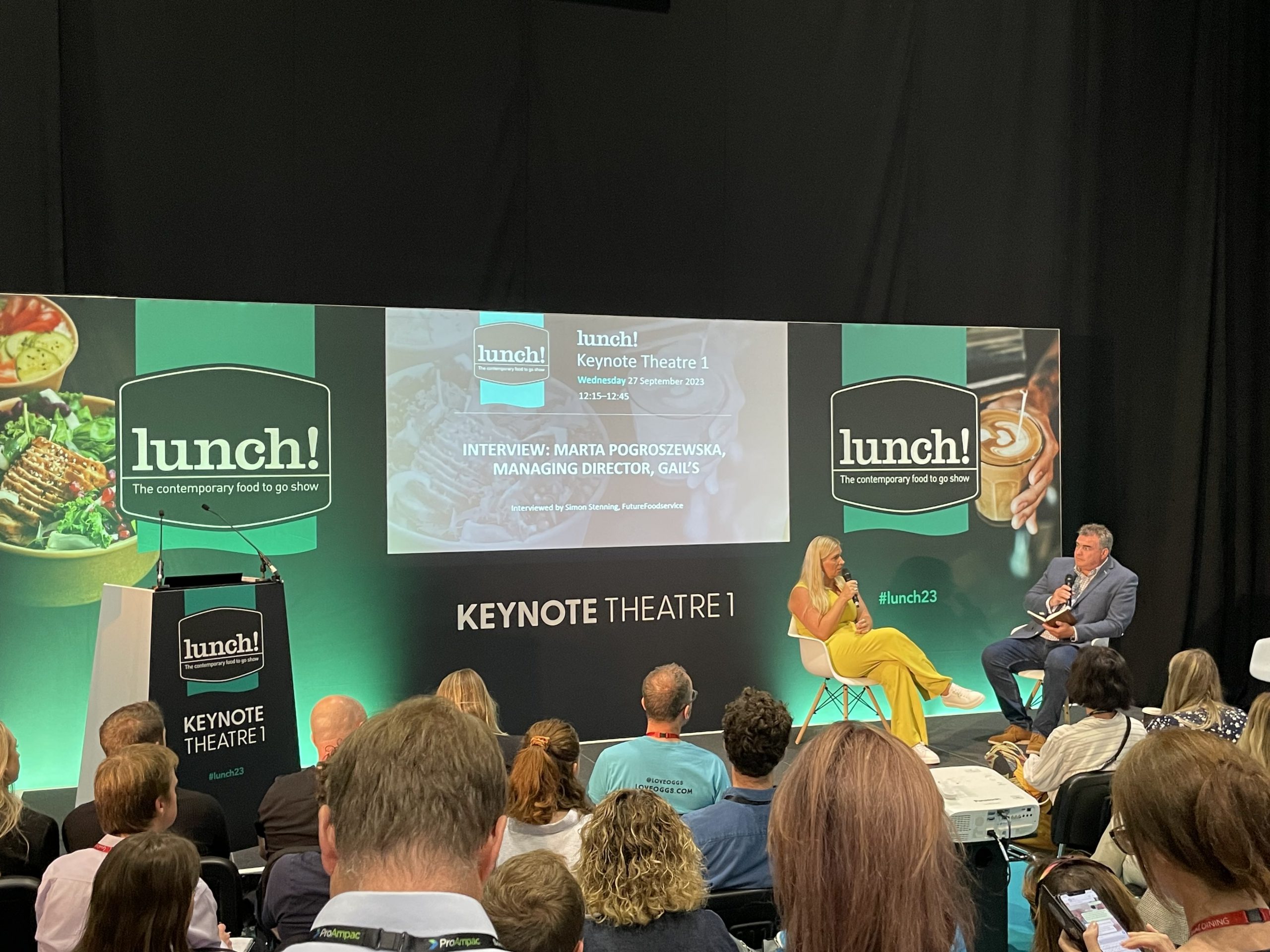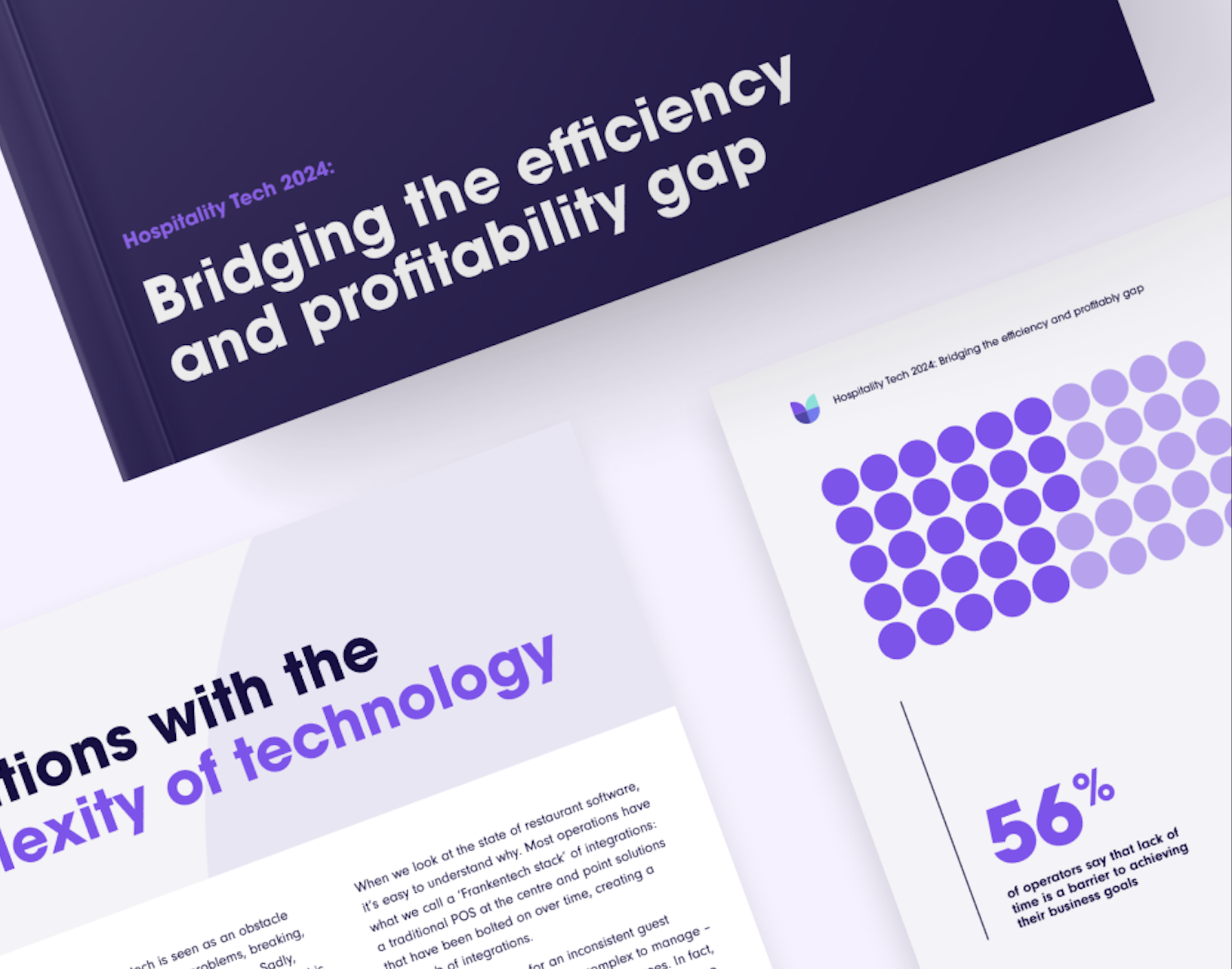Discover practical restaurant growth tips straight from the experts speaking at the lunch! show 2023
Once a year, the hospitality industry descends on the ExCel London for one of the highlights of the restaurant events calendar.
lunch! 2023 was more insightful than ever, with over 30 talks from some of the leading voices in restaurant operations.
Couldn’t make it? Don’t worry – we’ve highlighted some of the most important restaurant trends and growth guidance straight from the experts…
Restaurant growth tips from lunch! 2023
Tip #1: Cater to customers that are downtrading
With inflation and the cost of living crisis continuing to impact customer behaviour, QSR operators could easily panic about losing customers trading down to takeaways.
But there’s a positive flip side to the trading down trend, as explained by Shereen Ritchie – COO of Buns From Home: “QSR is actually in the strongest position when you look at all the categories, because customers from casual dining are trading down to QSRs to get the basket size down.”
Holly Franklin – Head Of Sales at Lumina Intelligence – pointed out that coffee brands are also well positioned to take advantage of this. “Consumers are also trading down socially – replacing restaurant experiences with coffee to save money but still have that socialisation.”
Making sure you’re catering to the needs of these new, down-trading customers should be a central part of your restaurant growth strategy, starting with customer experience.

Tip #2: Deliver a guest experience that gives them a reason to visit
Two important reasons that customers trade down are that they’re looking to maintain social experiences and to continue to treat themselves, whilst saving money.
This means delivering that perfect guest experience should be at the forefront of your operations. Consumers are expecting to get more out of their experience for the price – but so long as they’re getting it, they’re happy to spend.
For example, Ben Bracchi – Director of Operations at Blank Street Coffee – explained how the brand sets itself apart with its famous personal touch.
“We want to give customers an experience where they feel fulfilled and enriched. We believe that it’s that level of connection with our customers that will set us apart.”
Holly Franklin agreed that experience is becoming a more important factor driving consumer choice. She explained that 14% of consumers base their coffee shop choice on atmosphere – the second largest percentage rise in deciding factors.
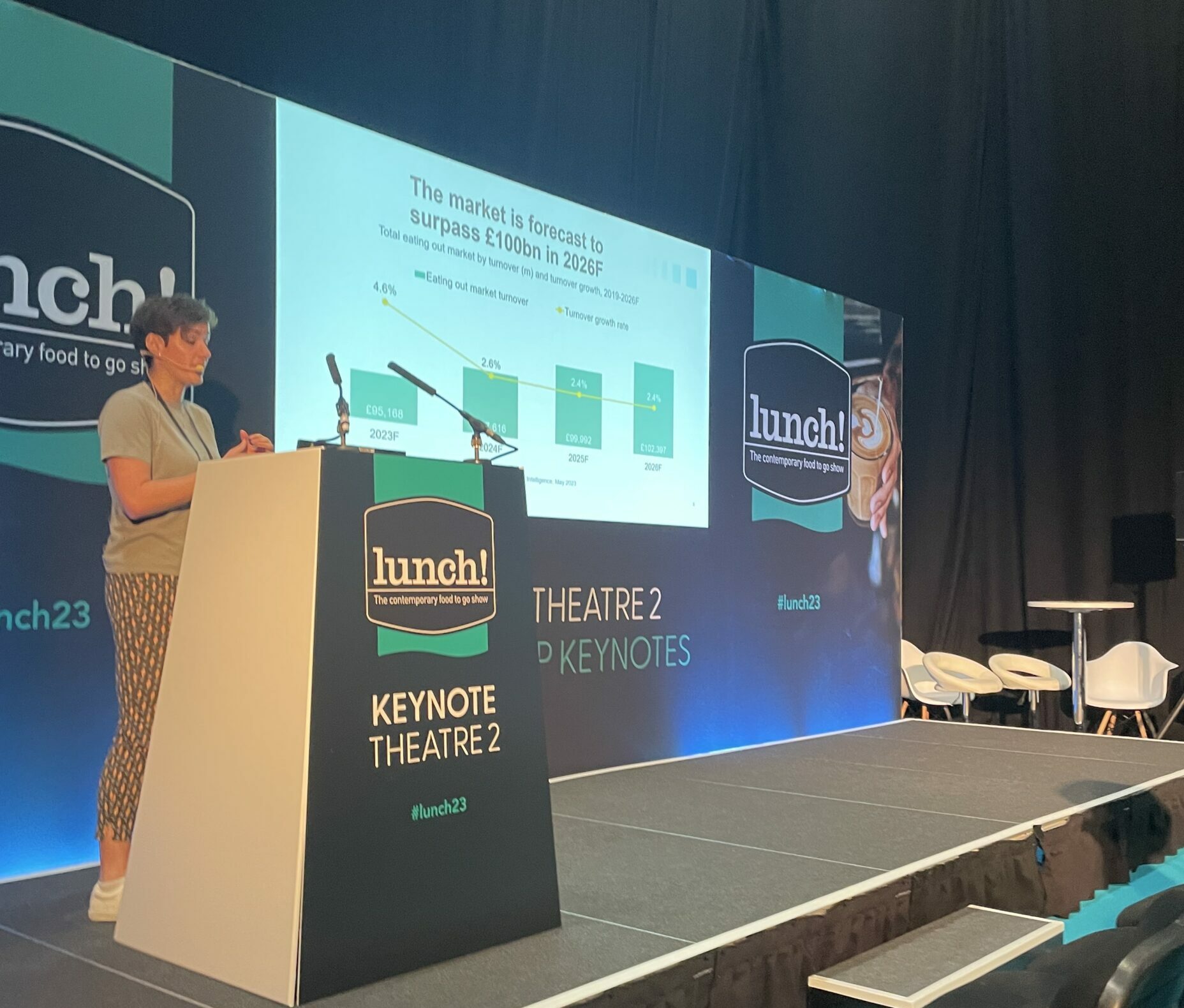
“Focus on speciality coffee to provide an experience,” Holly explained. “This allows consumers to treat themselves during the cost of living crisis. Have something on the menu that can’t be easily replicated at home, like cold brew coffee.”
Want more insight from operators?
Download our new industry research report ‘Hospitality Tech 2024’.
- Exclusive stats revealing the most important tech trends for restaurant growth.
- Quotes from restaurant operators and other leading industry experts.
Tip #3: Think of ways to increase average spend to counteract reduced footfall
All food-to-go categories have seen a reduced frequency of guest visits, but this is offset by a general increase in spend.
As reported by Nichola Knight:
9% of consumers
say they plan to spend more on food-to-go in the future than they do now
20% of consumers
say they plan to spend less on food-to-go in the future than they do now
Whilst these numbers might not seem encouraging on their own, compared to previous surveys the number of people planning on spending more in the future is increasing, whilst the percentage of those planning to spend less actually decreased by 4%.
Cleopatra Zukas – Head of Food at Coco Di Mama – explained how a pivot to focusing on increasing ATV has helped the brand:
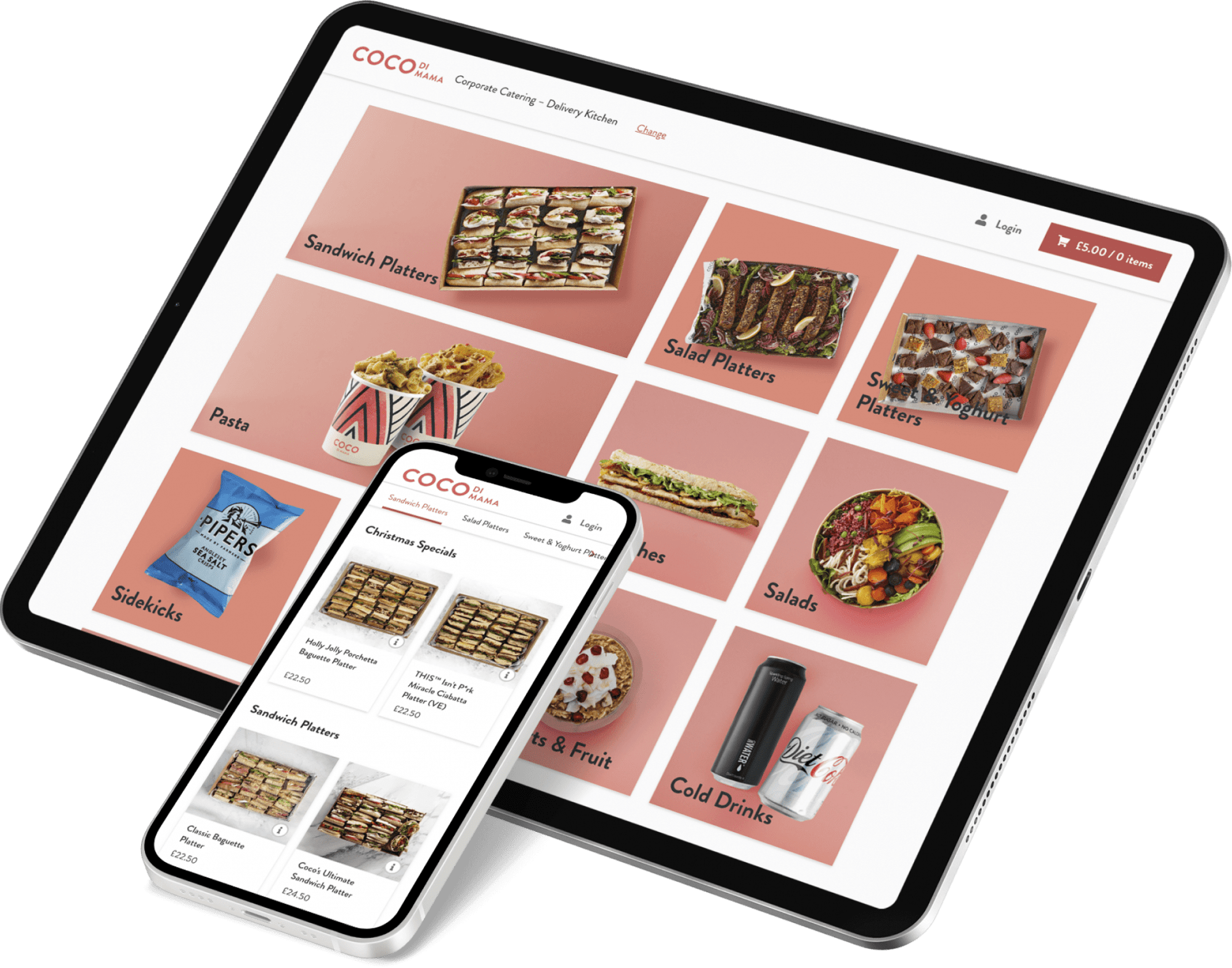
“Actually, targeting better value initiatives like lower ticket prices didn’t work that well for us. We’ve changed tact to what the customer is really looking for now.
With people working from home more, they’re actually looking for more interesting items they’re not making themselves. They’re willing to pay more than before because they’re not spending money every day on lunch anymore.”
Tip #4: Empower your people to increase retention
The recruitment crisis was much less of a focus in this year’s show. Instead, the focus turned to retention: how do you keep the brilliant staff you have?
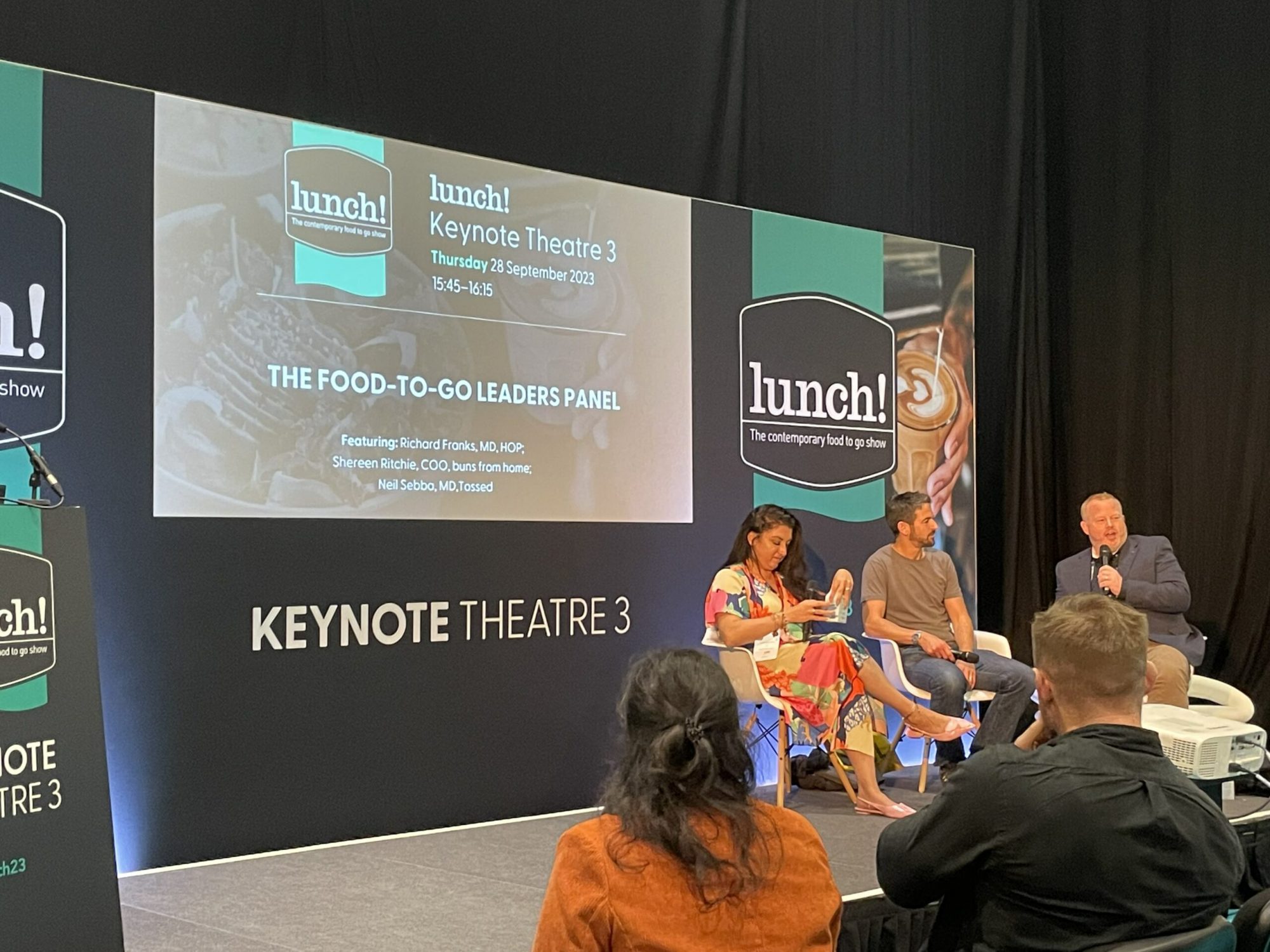
Shereen Ritchie lamented the fact that hospitality isn’t seen as a long-term career, in part because younger employees don’t see progression potential. “We’re not seen as a ‘real job’,” she said, “but our industry is so special. You can come from nothing, and you can be somebody. We need to champion our industry and show it is a ‘proper job’. Get the next generation in, evolve your business so it works for them, too.”

Creating a positive working culture where you really listen to your staff should also be at the heart of your retention strategy. This sentiment was backed up by Edyta Stec – Director of Operations at GAIL’s Bakery.
“Being interested in what our team is thinking about is so important. Asking your team constantly what they think, how can we be better for them, and what they want to achieve in the business.”
Tip #5: Use tech to simplify your operation
There was a big focus on the place of tech in restaurant operations. Many operators reported that taking a simpler approach to their tech stack had helped them run more efficiently and chase growth.
“People are making massive tech stacks, but that doesn’t help,” said Stasi Nychas, Co-Founder and COO of Neat Burger. “It makes it complicated. Sometimes you need to scale it back and only focus on what you need.”
And with the focus being on increased ATV, customer experience and happy staff for future growth, HOP Vietnamese attributed a lot of their success in these areas to the Vita Mojo Order Management System:
It’s been the best thing we’ve ever done, in terms of profit and in terms of experience.”

Find out how HOP reduced kitchen labour by 35% while increasing ATV and throughput by 20% by moving operations to the Vita Mojo Order Management System.
